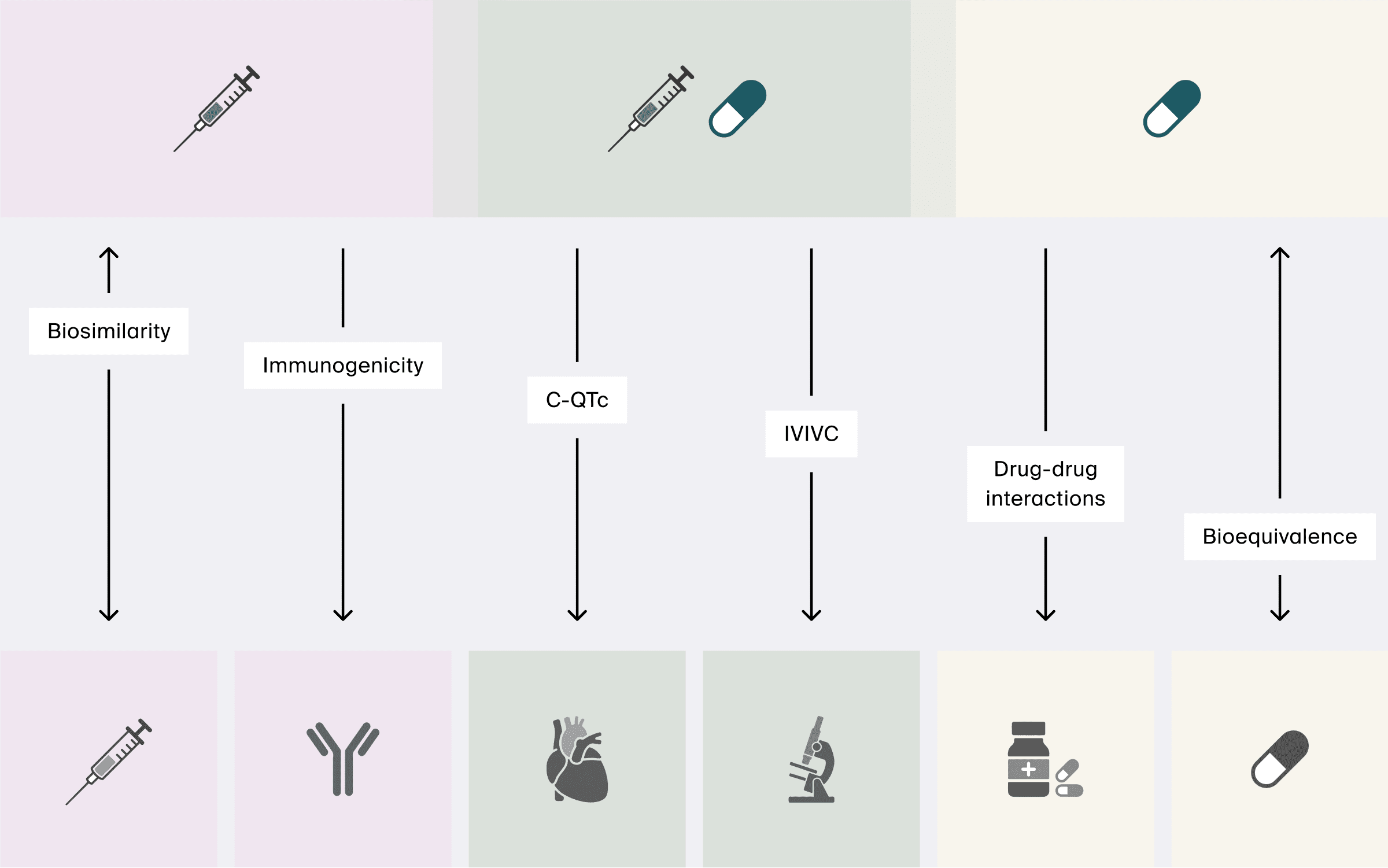Special considerations
C-QTc, DDIs, IVIVC, BE and BS, immunogenicity and other special considerations require special knowledge and methods, but have all in common to be able to be elucidated by leveraging modeling capabilities.
Challenges
Determining whether a drug prolongs the cardiac QT wave (C-QTc), impacts the profile of another drug (DDI), or correlates in vitro and in vivo observations (IVIVC) are all challenges to drug development that can be greatly benefited by modeling and simulations.
Other special considerations relate to demonstrate bioequivalence (BE) or biosimilarity (BS) for small molecules and biologics, respectively, as well as evaluating the potential immunogenicity response associated with the administration of a large molecule.

Benefits
Waived trials or augmented power
In some considerations such as C-QTc or DDIs, the modeler may be able to propose and conduct an analysis that uses already existing information and grant the waiving of the trial.
Supporting a regulatory claim, such as establishing bioequivalence between a new formulation and a reference formulation, or demonstrating biosimilarity of a new monoclonal antibody to a commercialized product, is a context of use which requires appropriate planning, conduct, and analysis.
Similarly, proper effect testing in trials involving potential immunogenicity issues can help ensure that the impact of an “antidrug antibody (ADA)” response can appropriately be accounted for in the filed dossier.
Recommended platforms
When addressing special considerations during trials, we can leverage the ways of working developed within the Pharmetheus Platforms:
To analyze both drug concentration (pharmacokinetic) and effects (pharmacodynamic) data using a population modeling approach. The adopted quantitative approach enables efficient integration of longitudinal information across subjects and across study protocols.
When the objective is to leverage accumulated knowledge to inform mechanistic analyses and or achieve predictions beyond observations.
A quantitative framework to support and inform development program strategies and decisions.
Solutions
We offer regulatory-compliant solutions that ensure effective use of data, so that your team can more accurately characterize the potential effects of a drug and make decisions confidently with sufficient precision.